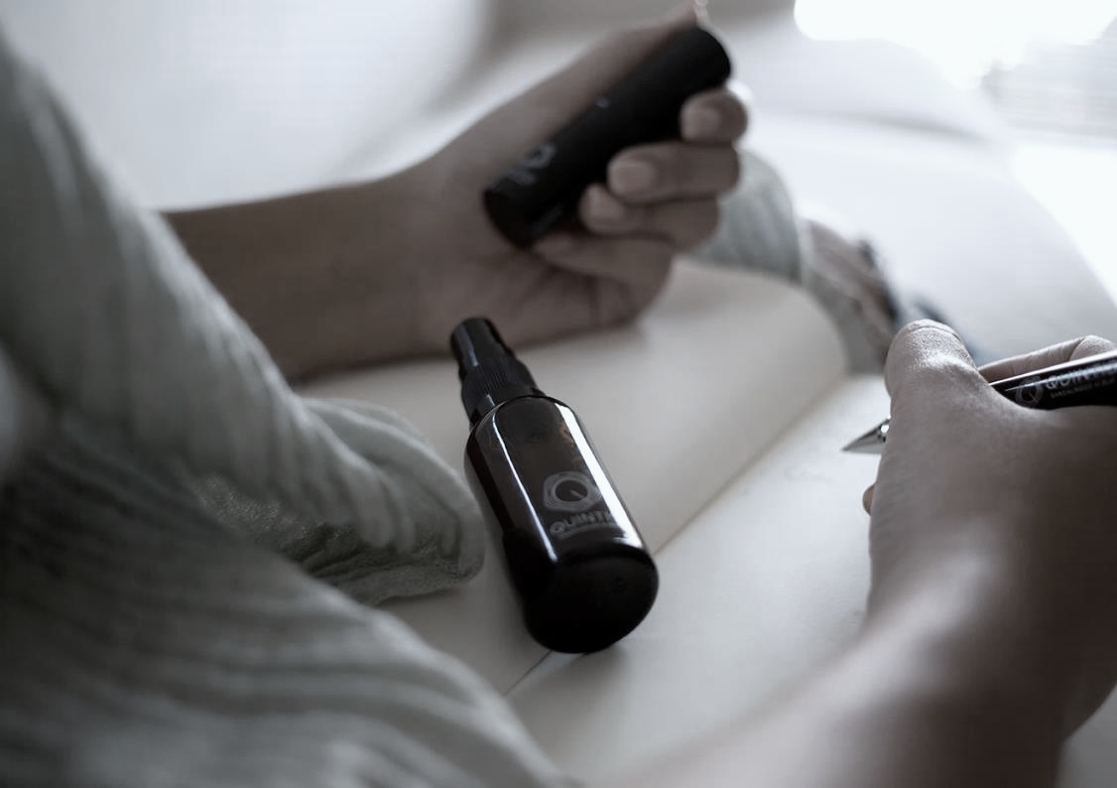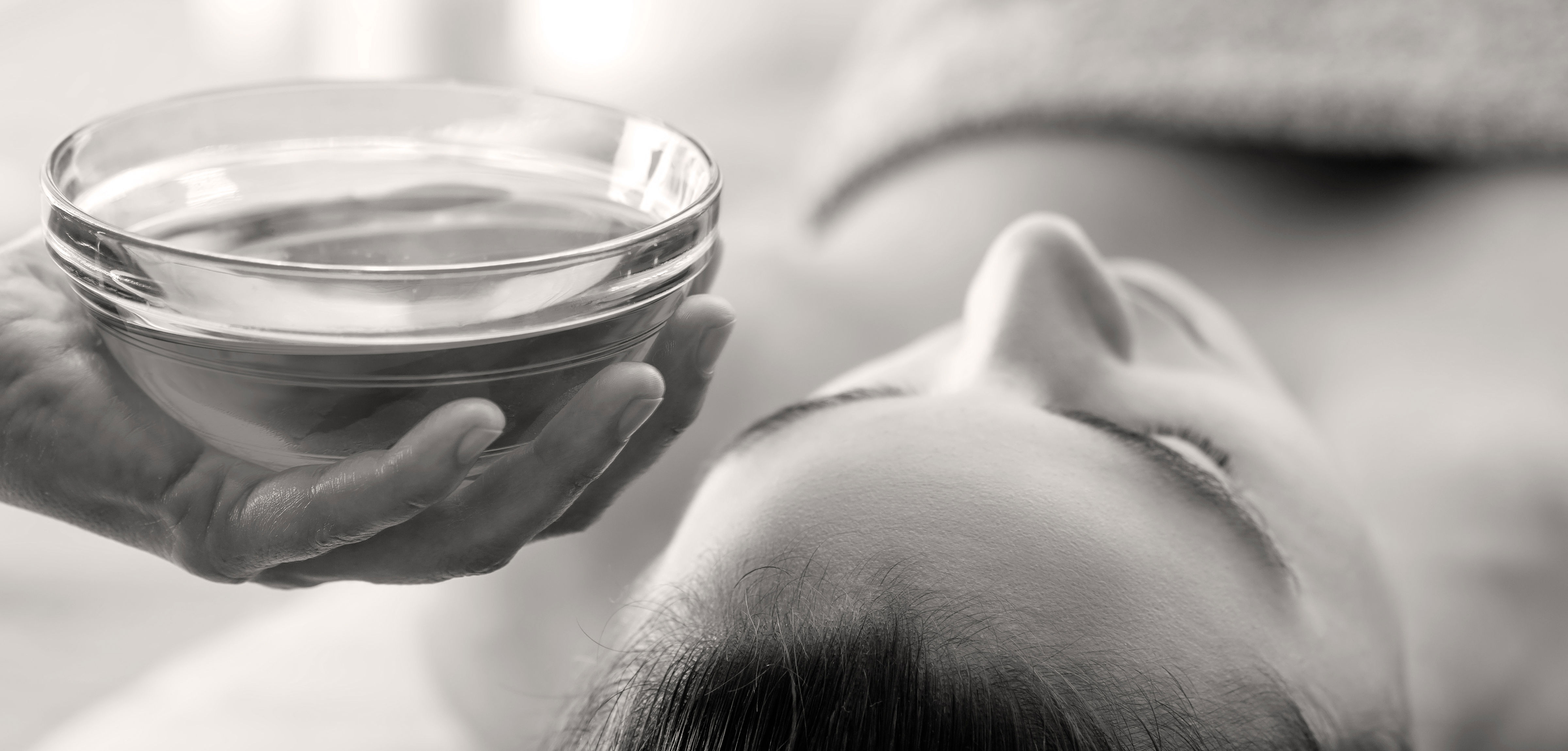Written by Deniz Ataman,
Independent Journalist
Before you start reading, take a slow deep breath and smell your current surroundings. Do you have a candle lit? Is the breeze blowing through an open window? Taking a moment to fill our lungs with our environment offers us insights about our space and ourselves. The air we breathe is filled with aroma molecules that can instantly unveil a range of emotions, uncover buried memories and soothe our physical body.
Across cultures and time, sandalwood oil has been used to soothe the mind, body, and spirit, identified in many ancient medical systems such as Ayurveda and Traditional Chinese Medicine. Its reputation for healing, and for its ability to neutralise stress, has complimented its illustrious fragrance reputation, making it the perfect addition to the soothing and healing world of aromatherapy.

Distilling the Essence
As an industry constructed around improving both physical and mental health, aromatherapy can be best described as holistic healing. Using a combination of natural plant extracts and oils, aromatherapy can be traced back to ancient Egypt, India and China, where aromatic plants were combined to create balms, oils and resins, known to have psychological and physical benefits for their users. The term “aromatherapy” was coined in the late 1920s by the French cosmetic chemist R. M. Gattefosse. He observed the rich antiseptic properties and skin permeability of essential oils, which is why massage therapy also intersects this practice.
Many of the essential oils used in aromatherapy are developed through steam distillation where high vapor pressure is used to separate the raw plant material from the oil. This method goes as far back as the 9th century by the alchemist Avicenna who discovered how to extract botanical essence, or oil.
Whilst each essential oil has different therapeutic properties, the most common benefits of aromatherapy are pain management, improved sleep quality, stress reduction, migraine/headache treatment, improved digestion and boosting immunity. As our most primal sense, smell certainly has the power to regulate our body at the cellular level. “One of the main [compounds] in sandalwood essential oil, sesquiterpene alcohols, have lymphatic tonic and venous tonic effects. It can be used for swelling, poor circulation, and varicose veins in women,” explains Yamamoto Yoshiko, President and Chairman of the International Aromatherapy Academic Association and Lecturer, Faculty of Agriculture, Kinki University.
Our noses are capable of smelling hundreds of aroma molecules in a split second. Those molecules are the key to unlocking the pathway to our brain. Once the molecules reach the olfactory receptors, it signals the brain’s olfactory bulb to activate our cortex and limbic system. These regions in the brain are responsible for releasing neurochemicals and hormones that influence our emotions and healing responses. So how does sandalwood play a role?

The Healing Scent of Sandalwood
Sandalwood oil is concentrated in the heartwood, or the centre, of the tree. At Quintis, their plantation grown Indian sandalwood trees mature after 15 years where we extract the oil using steam distillation. The leftover wood is chipped which can be ground further into powders, creating the perfect base for incense, or included as an ingredient in cosmetic formulations. The oil is a nutrient-rich ingredient made up of hundreds of therapeutic sesquiterpenes as Ms. Yamamoto mentioned earlier, but the two primary ones we’ll discuss today are alpha and beta santalol.
Beta-santalol is responsible for sandalwood oil’s trademark scent. However, alpha-santalol is responsible for most of sandalwood’s therapeutic health benefits so when inhaled, its woody, creamy and soft smell relaxes the central nervous system and inhibits delta opioid receptors in the brain, areas that are linked to depressive disorders. But scent goes beyond enhancing mood to soothing the skin – thanks to alpha santalol offering anti-oxidant, anti-aging, anti-pigmentation and anti-microbial benefits; while also releasing tension in the body. Ms. Yamamoto recommends sandalwood for clients who are experiencing stress and suffering from poor circulation and swelling. Whether inhaled or applied topically for massage, sandalwood’s therapeutic benefits run deep.
Health Benefits of Sandalwood
Indian sandalwood oil (Santalum album) is known to help our bodies release tension and relax beyond its high solubility levels – its potent molecules surpass the blood-brain barrier to trigger receptors like GABA and stimulate the body’s parasympathetic system even upon inhalation. Stimulating the brain’s glutamate receptors, the oil also improves learning and memory. Studies have shown more health benefits from sandalwood, including:
- Increased alertness and focus
- Improved sleep quality
- Regulated emotional eating and food cravings and eased digestion
We’re seeing sandalwood’s therapeutic use in a variety of ways thanks to its efficacy:
- As an essential oil in a diffuser
- Blended with a carrier oil (like jojoba or sweet almond) to compliment therapeutic effects
- In incense, candles and home sprays
- As an ingredient in personal care products
Ms. Yamamoto was gracious enough to share an aromatherapy recipe featuring sandalwood that addresses poor circulation, swelling of limbs, varicose veins, sciatica and lower back pain:
- Sandalwood (Santalum album)
- Cedar (Juniperus virginiana)
- Patchouli (Pogostemon cablin)
- Blend with peppermint (Mentha piperita).
Apply with a soft massage from the sole of the foot to the groin area.

Aromatherapy Today
By the end of 2026, the essential oil market is expected to reach $14.1 billion with a CAGR of 9.3% between 2020-2027. Aromatherapy’s place in the health sphere continues to thrive as conscious consumers look for botanical remedies to complement a holistic lifestyle. “There is no doubt that aromatherapy will continue to grow in popularity as it becomes available across more general products,” says Ms. Yamamoto. “Aromatherapy is very popular with people who live urban lives… as it’s very simple to enjoy in your daily life.”
It’s important to note that market data surrounding essential oils are adversely impacted by adulteration and a lack of traceability. At Quintis, their Indian sandalwood grows in Australia, providing a sustainable and ethical ingredient to the global market. Quintis supplies both plantation grown and managed Indian sandalwood oil, as well as ethically sourced Australian sandalwood oils. Their products hold over 20 global certifications, including certified natural and certified organic status.
In the ever-evolving information age, we’re learning more about the strong link between aromatherapy and stress-related maladies. With a long history of medicinal use paired with contemporary studies, sandalwood’s benefits offer therapy to the senses. As humans, our sense of smell is ancient. Our noses have led us towards safety and away from danger for centuries; and in our modern era, our noses are still a portal to lead us down a path of healing through the aromatic arts.
